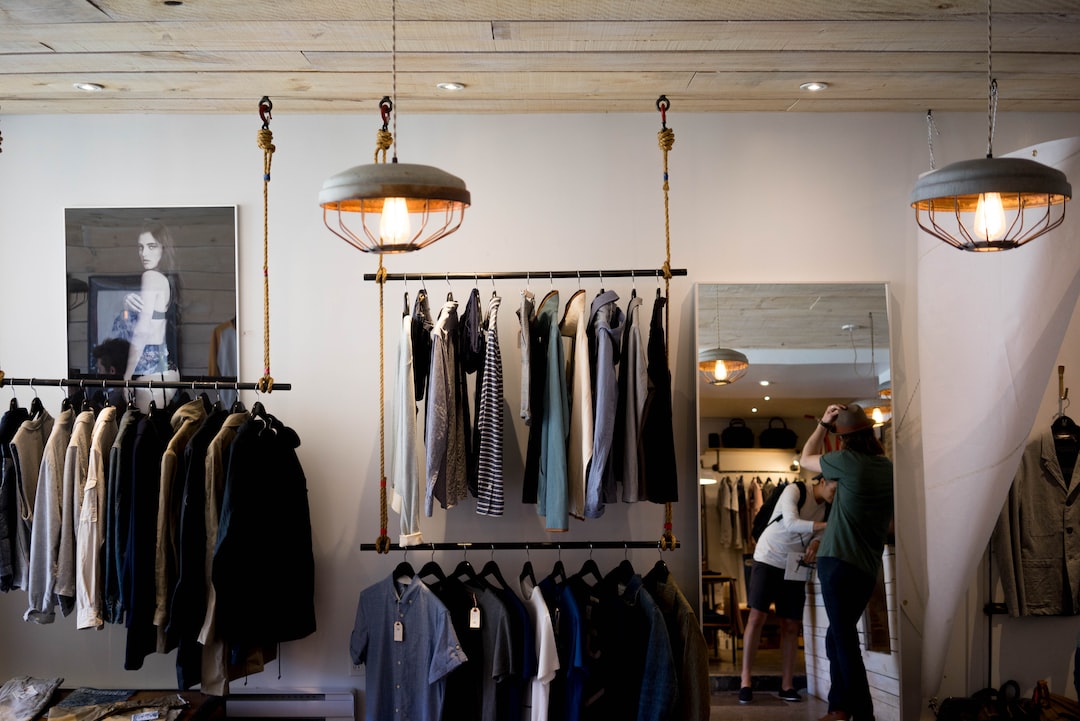Fashion has long been an ever-evolving industry, constantly adapting to the changing tastes and preferences of consumers. In recent years, the integration of artificial intelligence (AI) has revolutionized the way fashion brands operate, enabling them to personalize customer experiences, optimize supply chain management, and even drive trend forecasting. The power of AI in the fashion industry cannot be underestimated, as it allows brands to leverage data and technology to make informed decisions and stay ahead of the curve.
In this blog post, we will delve into the various ways AI is transforming the fashion industry. From AI-powered personalization to virtual try-ons, from optimizing supply chain and inventory management to AI-driven trend forecasting, and even the promotion of ethical and sustainable fashion practices, we will explore how AI is reshaping the landscape of fashion. So, let’s dive in and discover the exciting possibilities that AI brings to the world of fashion.
AI-powered personalization in fashion
In recent years, the fashion industry has witnessed a significant transformation with the integration of artificial intelligence (AI) technologies. One of the most exciting advancements in this realm is the emergence of AI-powered personalization. Through the use of sophisticated algorithms and machine learning, fashion brands and retailers are now able to offer highly tailored and individualized shopping experiences to their customers.
AI-powered personalization in fashion encompasses a wide range of applications. One of the most prominent examples is virtual styling, where AI algorithms analyze a customer’s preferences, body type, and style to recommend personalized outfits and accessories. This not only saves time for customers who may feel overwhelmed by the multitude of choices available, but it also allows fashion brands to better understand their customers’ preferences and offer targeted recommendations.
Moreover, AI can also enhance the personalization experience through virtual try-ons. By leveraging augmented reality (AR) technology, customers can now virtually try on clothes and accessories without physically stepping into a fitting room. This not only eliminates the hassle of trying on multiple items but also enables customers to visualize how different pieces would look on them before making a purchase. This level of personalization not only increases customer satisfaction but also reduces the likelihood of returns, benefiting both customers and retailers.
Additionally, AI-powered personalization extends beyond the realm of individual styling. It can also be utilized to create personalized product recommendations based on a customer’s browsing and purchase history. By analyzing vast amounts of data, AI algorithms can identify patterns and preferences, enabling fashion brands to offer relevant and timely suggestions to their customers. This not only enhances the overall shopping experience but also increases customer engagement and loyalty.
Furthermore, AI-powered personalization also plays a crucial role in improving the inclusivity of the fashion industry. By considering factors such as body type, skin tone, and cultural preferences, AI algorithms can help fashion brands create more diverse and inclusive collections. This not only allows customers from different backgrounds to find clothes that suit their unique needs but also promotes a more inclusive and representative fashion industry as a whole.
AI-powered personalization has revolutionized the fashion industry by offering highly tailored and individualized shopping experiences. Through virtual styling, virtual try-ons, personalized recommendations, and inclusivity enhancements, AI technologies are transforming the way customers interact with fashion brands. As the adoption of AI continues to grow, it will be fascinating to see how these advancements further shape the future of the fashion industry.
One of the most prominent examples is virtual styling, where AI algorithms analyze a customer’s preferences, body type, and style to recommend personalized outfits and accessories.
Enhancing Customer Experience Through Virtual Try-Ons
In the ever-evolving world of fashion, customer experience has become a key differentiator for brands. With the rise of e-commerce and the increasing demand for personalized shopping experiences, fashion retailers have turned to AI-powered technologies to enhance customer satisfaction and engagement. One such technology that has gained significant attention is virtual try-ons.
Virtual try-ons leverage artificial intelligence and augmented reality to provide customers with a unique and immersive shopping experience. By using computer vision algorithms, virtual try-ons allow customers to virtually “try on” clothing items and accessories without physically being present in a store. This technology not only saves customers time and effort but also addresses the limitations of traditional online shopping, where customers often struggle to visualize how a particular garment would look on them.
Through virtual try-ons, customers can now see themselves in different outfits, experiment with various styles, and make more informed purchasing decisions. The AI algorithms analyze the customer’s body measurements and movements to create a realistic and personalized virtual representation, enabling them to visualize how a garment fits and looks on their own body. This not only enhances the overall shopping experience but also reduces the likelihood of returns and exchanges, leading to increased customer satisfaction and loyalty.
Moreover, virtual try-ons have proven to be particularly valuable in the context of fashion e-commerce. By integrating this technology into their websites or mobile applications, fashion retailers can bridge the gap between the online and offline shopping experiences. Customers can now have a virtual fitting room at their fingertips, enabling them to try on multiple outfits, mix and match items, and explore different styling options from the comfort of their own homes.
Furthermore, virtual try-ons also address the issue of inclusivity and diversity in fashion. By offering a wide range of virtual models with diverse body types and skin tones, fashion brands can cater to a broader customer base and promote inclusivity. This allows customers to see themselves represented in the virtual try-on experience, fostering a sense of belonging and empowerment.
In summary, virtual try-ons powered by AI have revolutionized the way customers interact with fashion brands. By providing a realistic and personalized virtual shopping experience, this technology enhances customer satisfaction, reduces returns, and fosters inclusivity. As fashion continues to embrace AI-powered personalization, virtual try-ons undoubtedly play a crucial role in shaping the future of the industry.
This allows customers to see themselves represented in the virtual try-on experience, fostering a sense of belonging and empowerment.
Optimizing Supply Chain and Inventory Management with AI
When it comes to the fashion industry, efficient supply chain and inventory management are crucial for success. AI-powered technologies have revolutionized these processes, enabling fashion brands to optimize their operations and stay ahead in a highly competitive market.
Traditionally, supply chain management in the fashion industry has been a complex and challenging task. From sourcing raw materials to manufacturing, distribution, and retail, there are numerous stages involved, each with its own set of challenges and potential bottlenecks. However, AI has emerged as a game-changer in this domain, offering intelligent solutions to streamline and optimize every step of the supply chain.
One of the key areas where AI excels is demand forecasting. By analyzing vast amounts of historical sales data, customer preferences, and market trends, AI algorithms can predict future demand with remarkable accuracy. This enables fashion brands to optimize their inventory levels, avoiding both overstocking and understocking situations. With AI, they can ensure that the right products are available at the right time and in the right quantities, minimizing costs and maximizing customer satisfaction.
AI can also contribute to reducing lead times and improving production efficiency. By analyzing data from various sources, such as production capacity, supplier performance, and transportation logistics, AI algorithms can identify potential bottlenecks and suggest strategies to mitigate them. This not only helps fashion brands optimize their production schedules but also enables them to respond quickly to changes in demand or supply conditions.
Another area where AI can make a significant impact is in reducing wastage and improving sustainability. By analyzing data on product returns, customer feedback, and quality control, AI algorithms can identify patterns and root causes of waste. This enables fashion brands to take proactive measures to reduce defects, improve product quality, and minimize the environmental impact of their operations.
Furthermore, AI can enhance the efficiency of inventory management by automating processes such as stock replenishment, order fulfillment, and allocation. By integrating AI-powered inventory management systems with other technologies like RFID and barcode scanning, fashion brands can achieve real-time visibility and control over their inventory, reducing manual errors and improving overall operational efficiency.
AI-powered technologies have immense potential to optimize supply chain and inventory management in the fashion industry. By leveraging AI algorithms, fashion brands can improve demand forecasting, reduce lead times, minimize wastage, and enhance overall operational efficiency. As the industry becomes increasingly competitive and customer expectations continue to evolve, embracing AI in supply chain and inventory management is not just a choice but a necessity for fashion brands striving to stay ahead of the curve.
This not only helps fashion brands optimize their production schedules but also enables them to respond quickly to changes in demand or supply conditions.
AI-driven Trend Forecasting and Design Inspiration
As we delve further into the fascinating world of AI-powered personalization in fashion, it becomes evident that its impact goes beyond enhancing customer experiences and optimizing supply chain management. One of the most exciting applications of AI in the fashion industry is trend forecasting and design inspiration.
Trends in fashion are ever-evolving, influenced by a multitude of factors such as cultural shifts, social media, celebrity endorsements, and runway shows. Keeping up with these trends and staying ahead of the curve is crucial for fashion brands to succeed in an increasingly competitive market. This is where AI comes into play, revolutionizing the way trends are identified and inspiring designers to create unique and captivating collections.
Using advanced machine learning algorithms, AI can analyze vast amounts of data from various sources, including social media platforms, fashion blogs, online magazines, and even street style photographs. By examining patterns, keywords, and visual cues, AI algorithms can identify emerging trends in real-time, providing designers and fashion brands with valuable insights.
AI-driven trend forecasting goes beyond simply predicting what will be popular in the future. It also helps designers understand why certain trends are gaining traction and how they can incorporate them into their designs. By analyzing consumer preferences and behavior, AI can determine not only the most popular colors, patterns, and silhouettes but also the underlying emotions and aspirations that drive these preferences.
Moreover, AI can assist designers in finding inspiration by exploring vast databases of historical fashion archives, art collections, and cultural references. By analyzing these diverse sources, AI algorithms can identify connections, similarities, and potential combinations that may have been overlooked by human designers. This collaboration between AI and human creativity opens up new possibilities for innovative and boundary-pushing designs.
With AI-driven trend forecasting and design inspiration, fashion brands can stay ahead of the competition, offering customers fresh and exciting collections that resonate with their desires and aspirations. By leveraging AI’s analytical capabilities and combining them with human intuition and creativity, the fashion industry can push the boundaries of innovation and create truly unique and captivating designs.
This is where AI comes into play, revolutionizing the way trends are identified and inspiring designers to create unique and captivating collections.
Ethical and Sustainable Fashion Practices with AI
In recent years, the fashion industry has faced increasing scrutiny for its environmental impact and labor practices. As consumers become more conscious of the consequences of their purchasing decisions, the demand for ethical and sustainable fashion has grown significantly. Fortunately, AI technology has emerged as a powerful tool for addressing these concerns and revolutionizing the way fashion brands approach sustainability.
One of the key areas where AI is making a difference is in supply chain transparency. Traditionally, supply chains in the fashion industry have been complex and opaque, making it difficult to trace the origins of materials and ensure ethical practices throughout the production process. However, with AI-powered solutions, brands can now track and monitor every step of the supply chain, from raw material sourcing to manufacturing and distribution.
AI algorithms can analyze data from various sources, such as satellite imagery, IoT sensors, and blockchain records, to provide real-time insights into the environmental and social impact of fashion production. This enables brands to identify areas where improvements can be made, such as reducing carbon emissions, minimizing water usage, and ensuring fair labor practices. By leveraging AI, fashion companies can create transparent and sustainable supply chains, gaining the trust and loyalty of consumers who prioritize ethical fashion.
Furthermore, AI can also play a crucial role in promoting sustainable fashion consumption. By analyzing consumer data and preferences, AI algorithms can personalize recommendations and encourage customers to make more conscious choices. For example, AI-powered virtual stylists can suggest outfits that incorporate sustainable materials or second-hand clothing, helping consumers make eco-friendly fashion decisions without sacrificing style.
Another way AI is driving ethical fashion practices is through the use of predictive analytics. By analyzing historical data and market trends, AI algorithms can forecast demand for specific fashion items, allowing brands to optimize production and reduce overstocking. This not only minimizes waste but also helps prevent the need for excessive markdowns and discounts, which often lead to a culture of fast fashion and unsustainable consumption patterns.
Moreover, AI can assist in the design process itself, enabling fashion brands to create more sustainable collections. By analyzing vast amounts of data on materials, production techniques, and consumer preferences, AI algorithms can identify innovative and eco-friendly materials, as well as efficient production methods that minimize waste. This empowers designers to create fashion that is both aesthetically appealing and environmentally responsible.
Ultimately, the integration of AI into the fashion industry holds immense potential for promoting ethical and sustainable practices. By leveraging AI-powered solutions, fashion brands can establish transparent supply chains, personalize recommendations for sustainable fashion consumption, optimize production to reduce waste, and create eco-friendly designs. As consumers become increasingly conscious of the impact of their fashion choices, embracing AI technology can help the industry meet the demands for ethical and sustainable fashion, paving the way for a more responsible and environmentally conscious future.
AI algorithms can analyze data from various sources, such as satellite imagery, IoT sensors, and blockchain records, to provide real-time insights into the environmental and social impact of fashion production.
Conclusion
After exploring various aspects of AI-powered personalization in the fashion industry, it becomes evident that this technology has the potential to revolutionize the way we engage with fashion. From enhancing customer experience through virtual try-ons to optimizing supply chain and inventory management, AI is proving to be a game-changer.
The introduction of virtual try-ons has opened up a world of possibilities for customers who can now virtually try on clothes and accessories without leaving the comfort of their homes. This not only saves time but also reduces the hassle of returning ill-fitting items. With AI algorithms continuously learning from customer preferences and body measurements, virtual try-ons are becoming more accurate and personalized, leading to higher customer satisfaction.
Furthermore, AI is playing a significant role in optimizing supply chain and inventory management. By analyzing historical data, consumer behavior patterns, and market trends, AI algorithms can predict demand and optimize production and distribution processes. This results in reduced waste, lower costs, and improved sustainability in the fashion industry.
Another remarkable application of AI in the fashion industry is trend forecasting and design inspiration. By analyzing vast amounts of data from social media, fashion shows, and online platforms, AI algorithms can identify emerging trends and provide valuable insights to designers and brands. This not only helps in staying ahead of the curve but also enables the creation of more relevant and desirable products.
Moreover, AI is facilitating ethical and sustainable fashion practices. With the ability to trace and track the entire supply chain, AI ensures transparency and accountability. It helps identify potential ethical issues such as child labor or unsafe working conditions, enabling brands to take corrective actions and promote fair trade practices. Additionally, AI can assist in optimizing material usage, reducing waste, and promoting sustainable manufacturing processes.
In conclusion, AI-powered personalization is reshaping the fashion industry in numerous ways. From enhancing customer experiences to optimizing supply chain management, trend forecasting, and promoting ethical practices, AI is proving to be a powerful tool. As technology continues to advance, it will be fascinating to witness how AI further transforms the fashion landscape and enables a more personalized, sustainable, and inclusive industry.





